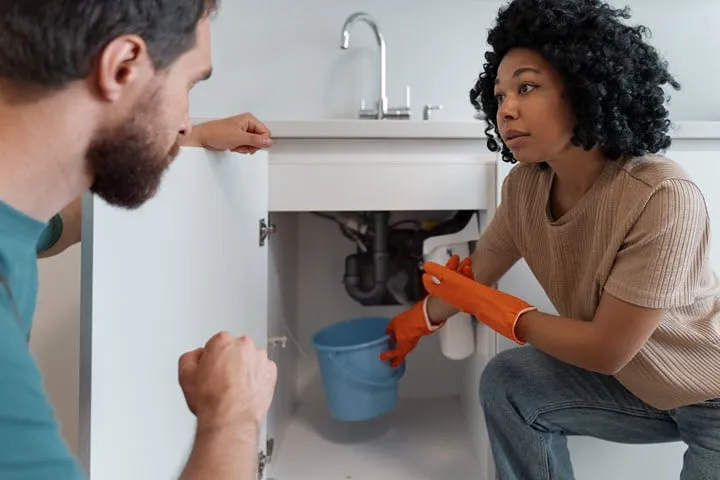Sharing is Caring!
If you want to sell your home, it’s a good idea to ensure you have no hidden plumbing problems that can derail your sale. Buyers can often overlook cosmetic flaws, but hidden plumbing problems tend to be dealbreakers.
What lies behind the walls or beneath the floors can create headaches that buyers are reluctant to inherit. For sellers, these surprises can stall negotiations or reduce offers considerably. Even in competitive markets, homes with unaddressed plumbing concerns often sit longer or sell for less.
Below, you’ll discover some hidden plumbing problems that might create issues when you try to sell your home.
Hidden Plumbing Problems You Don’t Want To Have
I remember the first time I walked into a home during an open house.
I immediately went to the bathroom to test the plumbing and water pressure. For some, that’s not a deal breaker while for others, it is.
Of course, I then looked for stains on the ceilings and floors for any signs of water damage. There were other things as well I scanned for but plumbing problems made it to the top of my list that day.
If you want to sell your home, it’s a good idea to ensure it has no plumbing problems that can hinder your sale, or, at worst, stop it completely. So, it’s not only about the beautiful home you want to buy, but also the home you have for sale.
At some point during our lives, we all place our homes on the market and with that, you need to make sure it’s ripe for the picking.
Low Pressure, High Risk
One red flag that turns buyers away fast is low water pressure.
It can signal aging pipes, sediment buildup, or even hidden leaks. While it may seem minor, poor water flow affects daily comfort and convenience. As mentioned above, many folks put this plumbing issue at the top of their list.
Furthermore, buyers may interpret this as a sign of deeper problems with the plumbing system. For example, old, galvanized steel pipes corrode from the inside, gradually shrinking water passage and increasing the chance of rupture.
Leaks Behind the Scenes
A small stain on the ceiling or wall may indicate something much larger.
Leaks behind drywall often go undetected until they become visible through discoloration, mold, or peeling paint.
Moisture behind walls encourages mold growth, which damages the structure and can raise health concerns. Buyers are often quick to walk away from a home that shows any signs of water damage, no matter how minor.
Slow Drains and Hidden Blockages
Sluggish drains in sinks, tubs, or showers may point to underlying clogs or even root intrusion in the sewer line. These problems are not always solved by clearing the trap and often require camera inspections and costly repairs.
Moreover, even if everything seems to be functioning during a tour, a home inspection that reveals drainage problems is likely to lead to renegotiation or buyer hesitation.
Outdated Materials and Improper Repairs
Homes built decades ago may still rely on materials that no longer meet modern safety standards. Polybutylene or lead pipes are examples of outdated systems that trigger concern during inspections.
Similarly, DIY repairs that don’t follow code or involve mixed materials can raise questions.
A licensed plumber can usually spot these issues immediately, and buyers often hire one before finalizing an offer. For instance, sellers in Illinois would work with professionals familiar with plumbing in Alton.
A home’s appeal is about more than curb appeal. What buyers cannot see matters just as much. Plumbing might be invisible during a walkthrough, but its impact on confidence, price, and speed of sale is anything but.
For more information, check out the infographic below.
Sharing is Caring!
Disclaimer: This story is auto-aggregated by a computer program and has not been created or edited by jennertrends.
Publisher: Source link













